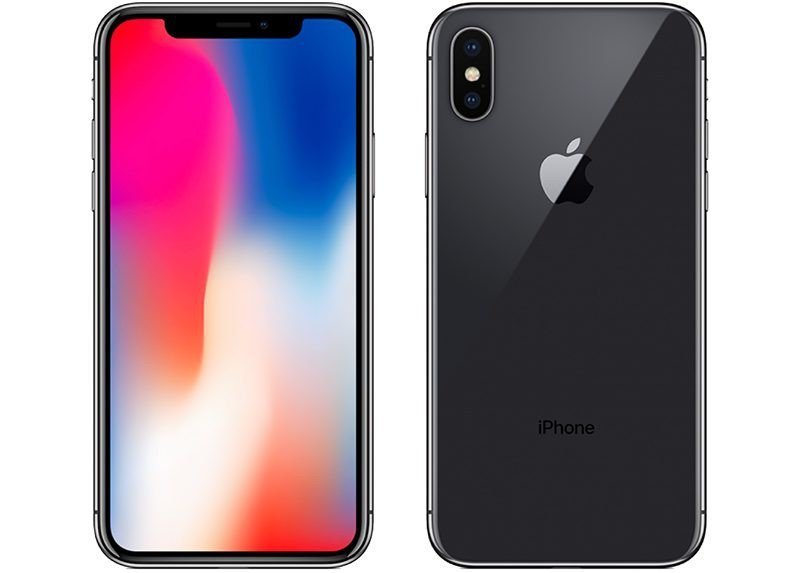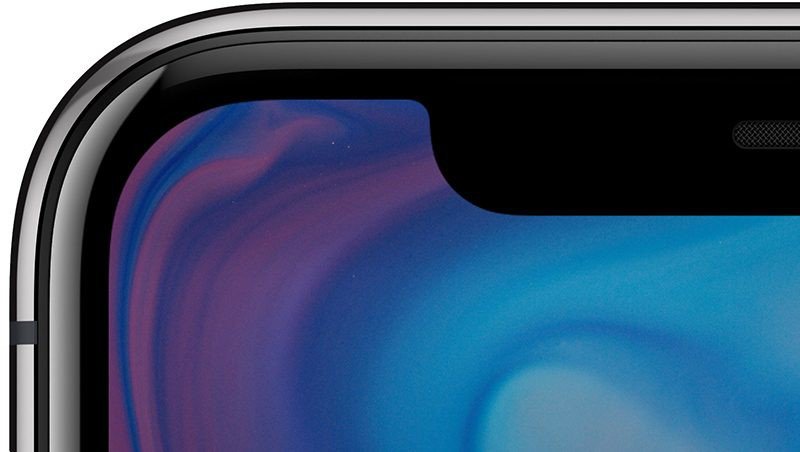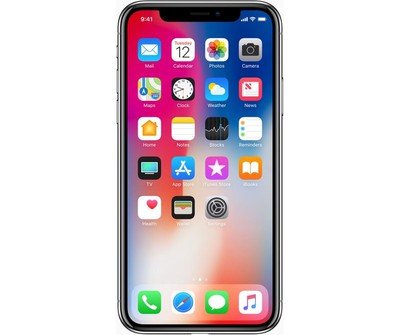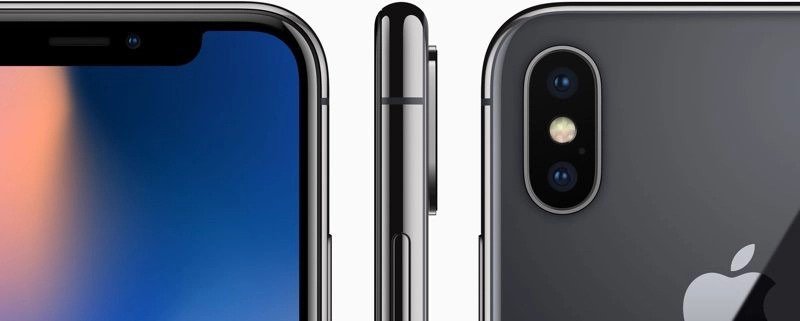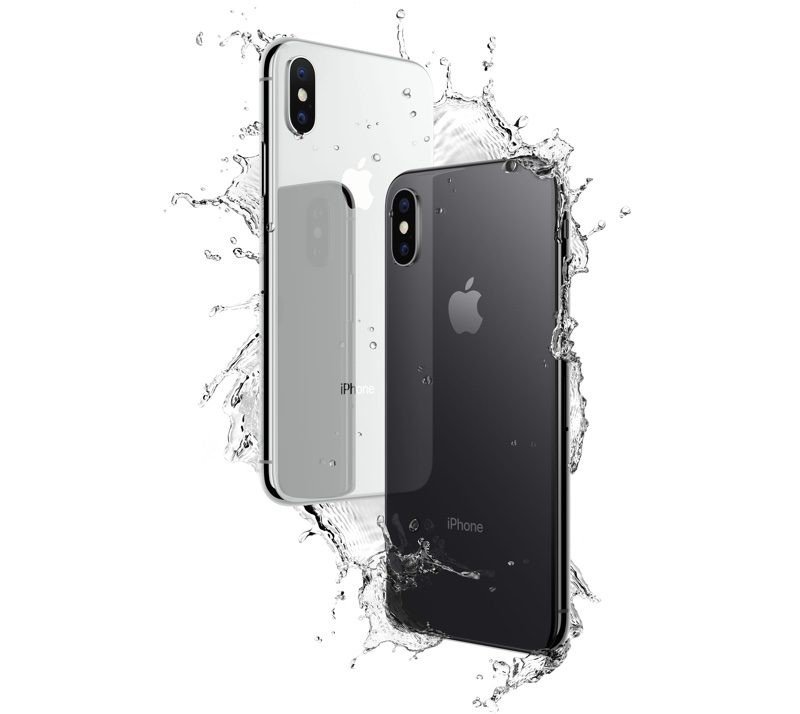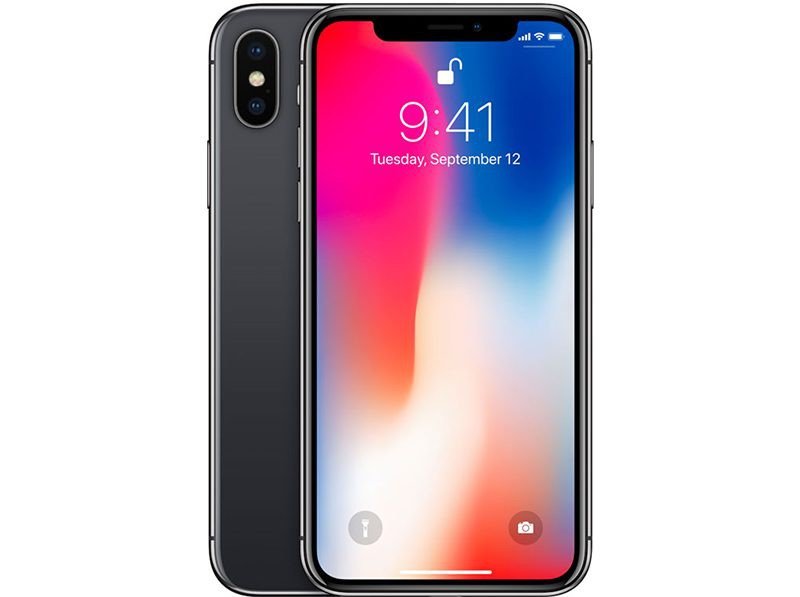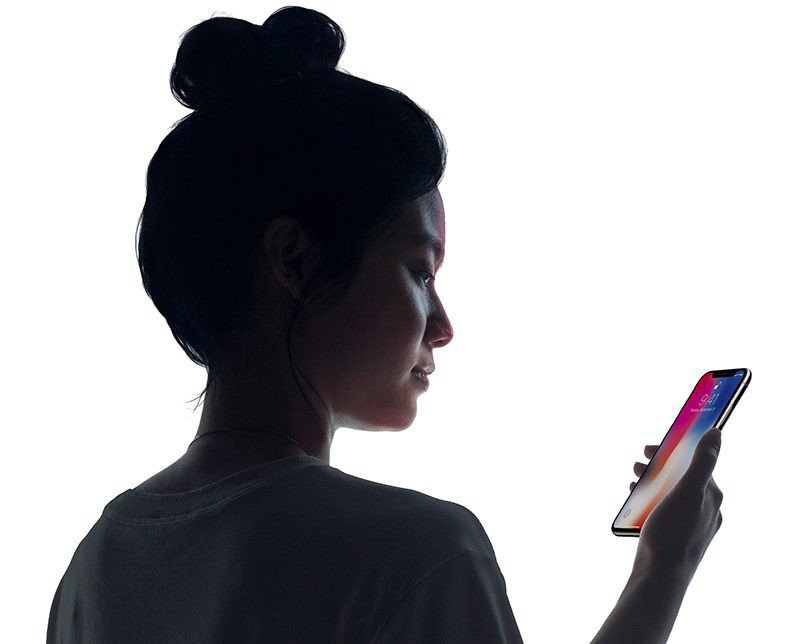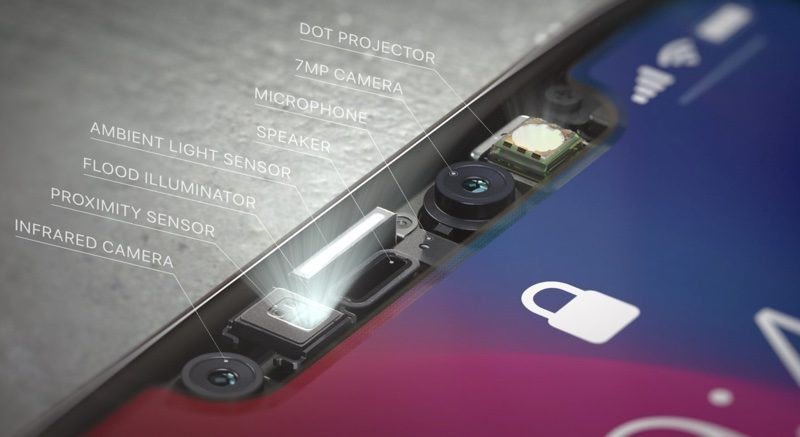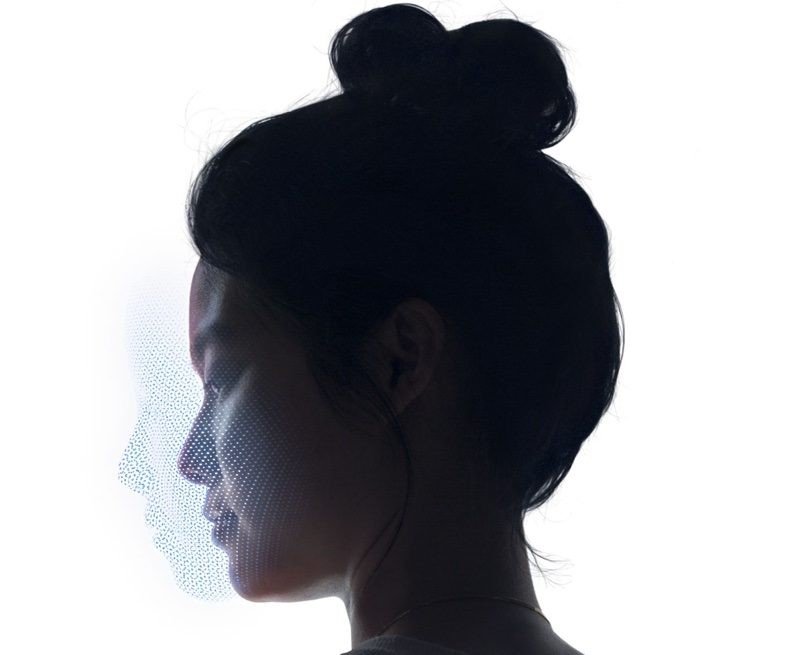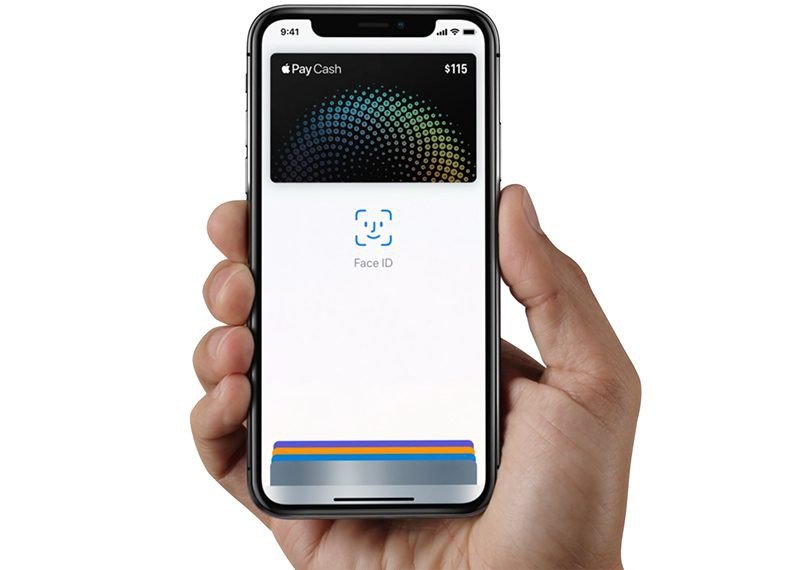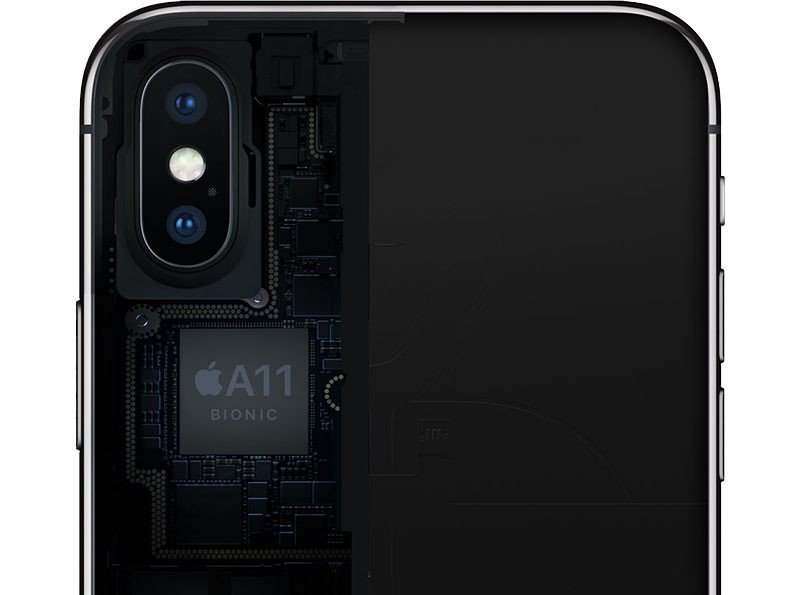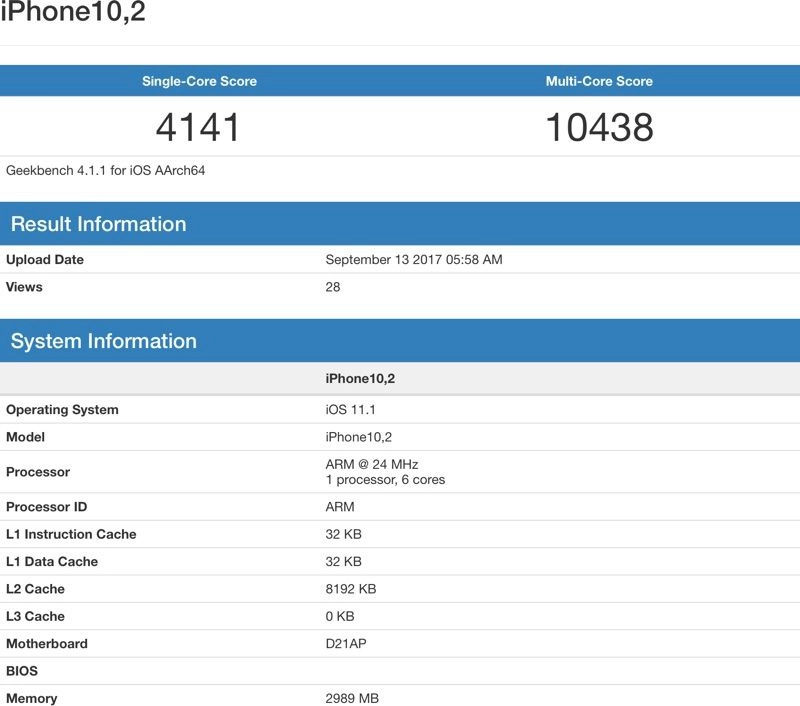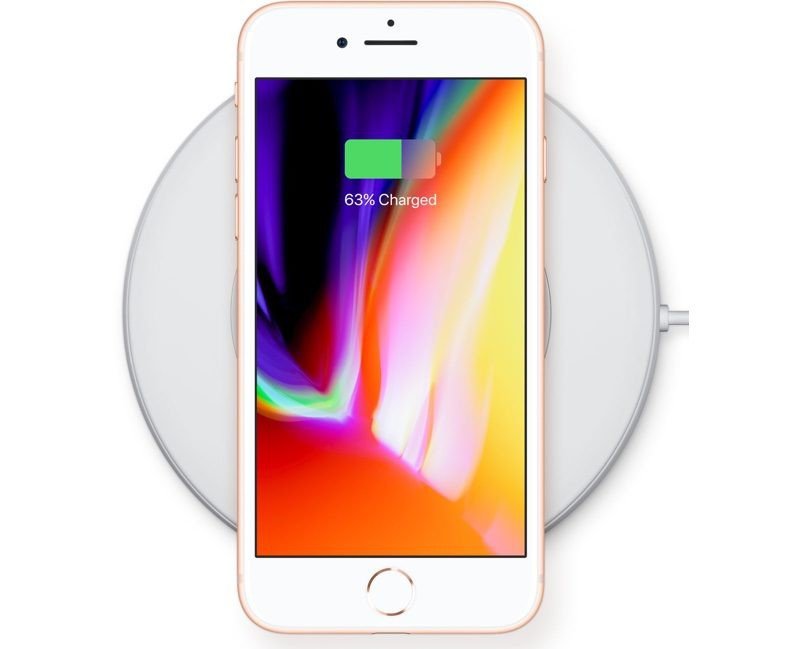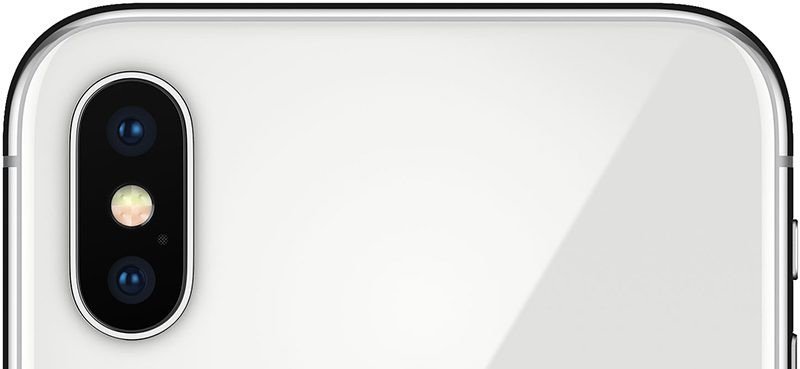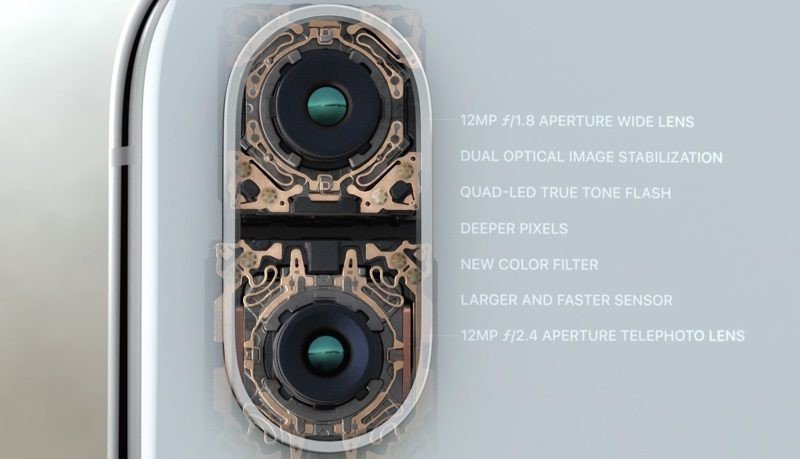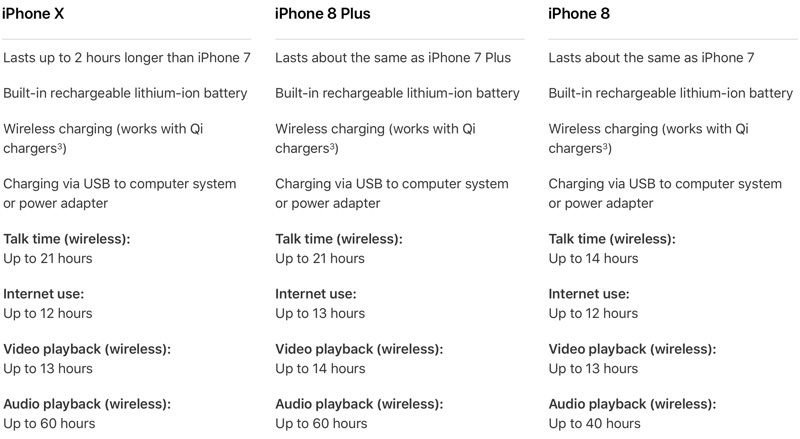iPhone X
The iPhone X was introduced at Apple's September 2017 event as a classic "One more thing…" addition to the iPhone 8 and 8 Plus product lineup.
Author:Daniel BarrettAug 19, 2022327631 Shares4427449 Views
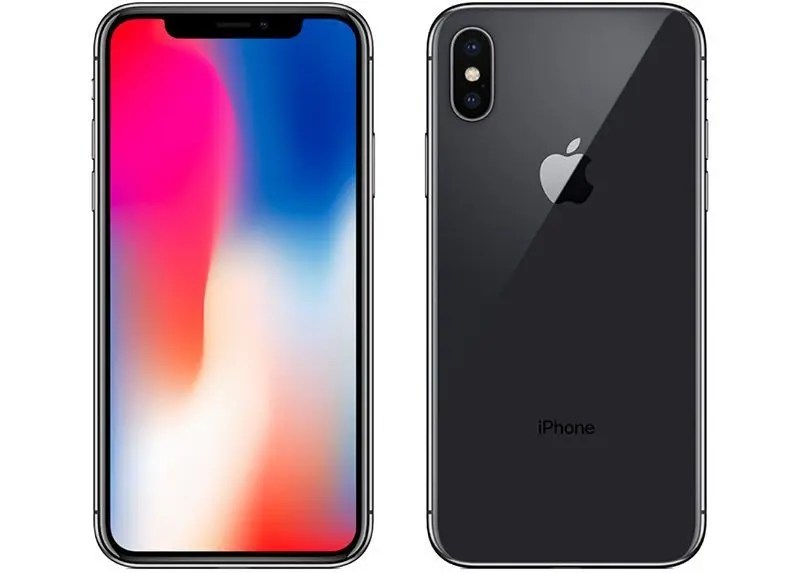
The iPhone Xwas introduced at Apple’s September 2017 event as a classic “One more thing…” addition to the iPhone 8and 8 Plus product lineup.
Apple’s aim with the iPhoneX was to create an iPhone that’s all display, blurring the line between physical object and experience. The 5.8-inch front screen melts into a highly polished curved-edge stainless steel band encircling a durable all-glass body available in two pearlescent finishes: Space Gray and Silver. Both feature a black front panel.
The edge-to-edge top-to-bottom Super Retina display adopts OLED technology for true-to-life colors, deep blacks, and a million-to-one contrast ratio. It features a 2436 x 1125 resolution and 458 pixels per inch. It supports HDR, wide color, 3D Touch, and True Tone for adjusting the white balance of the display to match the ambient lighting.
At 5.8 inches diagonally, the iPhone X has a larger display than prior-generation iPhones, but with no bezels aside from a notch housing the camera and sensors, it fits comfortably in the hand. At 143.6mm tall by 70.9mm wide by 7.7mm deep, it’s not much bigger than an iPhone 8, and it’s smaller than an iPhone 8Plus.
The glass body of the device is IP67 water and dust resistant and it enables support for inductive wireless charging. The iPhone X adopts the Qi wireless standard and can charge through the glass back using any Qi-certified charging accessory.
With an edge-to-edge design, there is no room for a Home button, so the iPhone X adopts an updated user experience. A swipe up at the bottom of the screen brings up the Home screen, while a swipe and a hold brings up App Switcher. There’s a Tap to Wake feature for looking at notifications, the side button can be pressed and held to activate Siri, and the Control Center is accessed by swiping downwards from the top status bar.
No Home button also means no Touch ID, so unlocking the device is done with a Face ID facial recognition system. Face ID uses the TrueDepth front-facing camera system to create a 3D map of your face that’s used much like a fingerprint for unlocking the iPhone, authenticating Apple Pay purchases, making App Store purchases, and accessing passcode protected apps.
Face ID utilizes infrared camera innovation so it works in dark. It likewise utilizes AI and detects your face with caps, glasses, beards, and different objects clouding your face. Since it utilizes a 3D map of the face, Face ID can’t be tricked by photographs, covers, or other facial reproductions. As an additional layer of security, Face ID is “attention aware” and opens your iPhone only when you’re looking at it.
Apple’s Face ID is powerwed by a best in class dual-core neural engine built into the A11 Bionic chip, information stored in the Secure Enclave and all processing done on-device. The A11 chip incorporates a total of six cores, with two performance cores and four high-efficiency cores, including the neural engine.
With a second-generation Apple-designed performance controller, all six cores in the A11 chip can be accessed at the same time, resulting in much improved performance, especially when it comes to multi-threaded workloads. The A11 also features a faster GPU, an Apple-designed image signal processor and video encoder, an A11 motion coprocessor, and the Secure Enclave for Face ID.
The performance cores are 25 percent faster than the A10, while the high-efficiency cores are 70 percent faster. A redesigned GPU is 30 percent quicker, and there’s 3GB of RAM in the gadget.
With effectiveness upgrades enabled by the A11 Bionic chip, the iPhone X offers two hours more battery life than the iPhone 7, but the battery misses the mark when compared to the battery in the iPhone 7 Plus.
A similar 7-megapixel TrueDepth camera that forces Face ID enables a feature called Animoji. Animoji are 3D emoji able to mimic your facial expressions. The TrueDepth camera tracks more than 50 facial muscle movements and translates them to the Animoji, which can be used in the Messages app.
At the rear, the iPhone X features a vertical 12-megapixel dual-lens camera arrangement with an f1.8 wide angle lens and an f/2.4 aperture telephoto lens. Both lenses support optical image stabilization and have improvements like an updated color filter, deeper pixels, better low light zoom, and improved video stabilization. Between the two cameras, there’s a quad-LED True Tone flash.
With the individually calibrated cameras, a refreshed accelerometer and gyroscope, tuning for ARKit, and the powerful A11 chip, the iPhone X has been designed for a better augmented reality experience.
Design
The iPhone X featured the first new iPhone design Apple has introduced since the iPhone 6 and 6 Plus launched in 2014 with new screen sizes. With the iPhone X, Apple introduced a display that extends from edge to edge and top to bottom with minimal bezels for an all-screen structure.
Aside from a slim bezel that wraps around the edges of the device and a front notch that houses the front-facing camera, speaker, and sensors, display is all you see when looking at the iPhone X. There is no bottom bezel, no Home button, and no Touch ID fingerprint sensor.
With the disposal of the bezels, Apple has had the option to pack a 5.8-inch display into a body that not much bigger than the iPhone 8. The iPhone X measures in at 143.6mm tall by 70.9mm wide, and it is 7.7mm thick.
Comparatively, the iPhone 8 measures in at 138.4mm tall, 67.3mm wide, and 7.3mm thick, while the iPhone 8 Plus is 158.4mm tall, 78.1mm wide, and 7.5mm thick. As you can see, the iPhone X is larger than the iPhone 8, but smaller than the iPhone 8 Plus. It is, however, thicker than both devices, but is able to be comfortably held and used with one hand.
The iPhone X comes in Silver and Space Gray, with both colors offering an almost pearlescent finish thanks to a seven-layer ink process that has allowed Apple to introduce precise hues and opacity.
The left side of the device houses the standard mute switch and volume buttons, while the right side features an elongated side button that has expanded functionality to compensate for the removal of the Home button.
At the back of the iPhone X, there’s a dual-lens rear camera arranged in a vertical orientation. The camera continues to protrude slightly from the body of the device, and between the two lenses, there’s a quad-LED flash and a microphone.
The bottom of the device features a traditional Lightning port for charging purposes along with six speaker holes located on either side of it.
iOS 11 Interface Changes
With no Home button, Apple rethought the user interface on the iPhone X, and made improvements that it believes ultimately result in a more intuitive usage experience.
Unlocking the iPhone X is done with a Face ID facial recognition system, and to get to the Home screen, you simply swipe up from the bottom of the device. A swipe upwards to go back to the Home screen works from within any app, and Reachability can be enabled in Settings and accessed by swiping downwards on the bar at the bottom of the display.
At the top of the display, the status bar that displays time, cellular signal, and battery life is split and displayed on either side of the device notch. Swiping downwards from either side of the status bar opens up Control Center.
Without a Home button, the side button on the iPhone X does a lot more. Holding down on the button activates Siri, while pressing the side button and the volume up button takes a screenshot. Apple Pay purchases are now confirmed with a double click on the side button.
To activate the display, you can use the side button, the Raise to Wake feature, or a “Tap to Wake” feature that turns on the iPhone’s screen when you tap it with a finger.
Water and Dust Resistance
The iPhone X is IP67 water and dust resistant. That means it is impervious to dust and can withstand immersion in water up to one meter (3.3 feet) deep for 30 minutes in laboratory conditions.
Though the iPhone X stands up to splashes, rain, and brief accidental water exposure, intentional water exposure should be avoided. Apple warns that water and dust resistance are not permanent conditions and could decrease as a result of normal wear. Apple’s warranty also does not cover any kind of water damage to iOS device, so it’s best to use caution when exposing the iPhone X to liquids.
Display
The “Super Retina” display in the iPhone X is the first high dynamic range (HDR) OLED display Apple incorporated into an iPhone. OLED brings vivid, more true-to-life colors, deep blacks, and a 1,000,000 to 1 contrast ratio.
The Super Retina display features a 2436 x 1125 resolution with 458 pixels per inch, the highest resolution and pixel density Apple has introduced in an iPhone. It offers True Tone technology, which uses an ambient light sensor to adjust the white balance of the display to match the ambient lighting in a room. This cuts down on eyestrain and makes for a more paper-like reading experience.
3D Touch and Taptic Engine
Though it has an OLED display, the iPhone X continues to support 3D Touch gestures. 3D Touch is available throughout the iOS 11operating systemand is often used to display additional information with a single force press gesture.
A Taptic Engine continues to provide tactile feedback in the form of vibrations when users interact with the display.
Face ID
Face ID is a facial recognition system that replaces the Touch ID fingerprint sensor used for authentication purposes in earlier devices. In many ways, Face ID is just like Touch ID, except it uses a facial scan instead of a fingerprint. It does all of the same things, like unlocking your iPhone, allowing access to third-party passcode-protected apps, confirming purchases, and authenticating Apple Pay payments.
Face ID uses a set of sensors and cameras built into the front of the iPhone X, and Apple calls this multi-component setup its TrueDepth camera. To create a scan of your face, a Dot Projector projects more than 30,000 invisible infrared dots onto your face. The dot map is read by an infrared camera and the structure of your face is relayed to the A11 Bionic processor in the device where it is transformed into a mathematical model.
It takes just fractions of a second for the iPhone X to scan your face, recognize you, and unlock your device, though Face ID has been described as slower than Touch ID. When measured side by side, Touch ID unlocks an iPhone faster, but Face ID offers an interface that’s ultimately faster in day-to-day use because it’s more streamlined.
Face ID won’t work when your eyes are closed, when you’re sleeping, when you’re unconscious, or when you’re looking away from your phone.
Attention aware is optional and there is an accessibility feature to turn it off for those who are unable to focus on the iPhone’s screen, but most people will want to leave it turned on for the added layer of security.
Face ID also turns off after two failed facial recognition attempts and a passcode needs to be entered for it to be turned back on.
Face ID is encrypted and stored in the Secure Enclave on the iPhone X. Apple can’t access your Face ID data, nor can anyone who gets ahold of your phone. Authentication happens entirely on your device, with no Face ID data ever stored in the cloud or uploaded to Apple.
Face ID in the Dark
Because Face ID uses infrared, it works in low light and in the dark. Apple has built a Flood Illuminator into the TrueDepth camera to make sure there’s always adequate infrared light to take a scan of your face.
You don’t need to hold your iPhone right in front of your face for Face ID to work. It can work from multiple angles so you can hold it at a comfortable position as you might when just casually looking at the screen.
Apple Pay With Face ID
Face ID replaces Touch ID when authenticating Apple Pay purchases. When checking out with Apple Pay, a glance at the iPhone X authenticates a payment, and a double click on the side button of the device confirms it.
A11 Bionic Processor
The iPhone X is powered by a 10-nanometer six-core 2.4GHz A11 Bionic chip designed by Apple. The A11 Bionic chip features two performance cores and four high-efficiency cores, all of which can be harnessed at the same time thanks to a second-generation performance controller resulting in 70 percent better performance for multi-threaded workflows and much better battery life.
Apple says the two performance cores in the A11 are 25 percent faster than the A10, while the efficiency cores are 70 percent faster. Those speed increases have been reflected in early benchmarks, with the A11 in the iPhone X and iPhone 8 earning an average single-core score of 4169 and an average multi-core score of 9836.
Based on those scores, the A11 chip outperforms the A10 in previous-generation devices by a wide margin, and it also outperforms the A10X in the iPad Pro. In fact, it’s close to the performance of the highest-end 3.5GHz 2017 13-inch Retina MacBook Pro model.
The A11 chip features an Apple-designed three-core GPU that’s 30 percent faster than the A10 in the iPhone 7, for much improved graphics performance, and it includes an embedded M11 Motion coprocessor that captures motion-based data from the compass, accelerometer, and gyroscope to power fitness capabilities, augmented reality experiences, and more, without significant power drain.
A11 Bionic Neural Engine
Two of the cores in the A11 Bionic chip are dedicated to a neural engine able to process more than 600 billion operations per second. The neural engine is what powers Face ID and other machine learning tasks.
RAM
The iPhone X features 3GB RAM, like the iPhone 7 Plus and iPhone 8 Plus.
Inductive Wireless Charging
Apple chose glass for the body of the iPhone X to enable inductive wireless charging. Apple is using the Qi wireless charging standard that is also available in many Androidphones, which means the iPhone X can charge wirelessly using any Qi-certified inductive charging device.
Inductive charging requires the body of the iPhone to be placed against a charging mat, with the iPhone X charging at a maximum of 7.5 watts. Though there are already many Qi wireless charging accessories on the market, companies like Belkin and Mophie created charging accessories designed specifically with Apple’s iPhones in mind.
As of iOS 11.2, the iPhone X, iPhone 8, and iPhone 8 Plus support faster 7.5W wireless charging using compatible third-party wireless chargers. Not all wireless chargers support 7.5W, so it’s best to make sure wattage is listed before making a purchase.
Wireless charging is convenient and best suited to overnight charging and situations where you don’t immediately need an infusion of power.
Rear Camera
The rear iPhone X camera features a dual-lens arrangement in a vertical orientation. There’s a standard f/1.8 aperture 12-megapixel wide-angle lens, and a f/2.4 aperture 12-megapixel telephoto lens.
Apple is using an improved 12-megapixel sensor in the iPhone X, along with revamped color filter and deeper pixels, but it’s not really clear what Apple means by “deeper pixels.”
The iPhone X features an Apple-designed image signal processor that’s able to better detect the elements in a scene, including people, motion, and lighting, to optimize photos before they’re captured. The image signal processor also brings advanced pixel processing, wide color capture, faster autofocus, and improved HDR.
Most notably, the telephoto camera in the iPhone X supports optical image stabilization, meaning both lenses support the feature for better photo quality and improved low light performance. Low light performance in the iPhone X’s telephoto lens has shown significant improvement over the telephoto lens in the iPhone 7 Plus in testing.
Sandwiched between the two camera lenses is a Quad-LED True Tone Flash with a Slow Sync feature that combines a slow shutter speed with a strobe pulse for a brighter foreground subject and properly exposed background in low lighting conditions.
Video Capabilities
The iPhone X can capture 4K video at up to 60 frames per second, and 1080p slo-mo video at up to 240 frames per second. Advanced video stabilization techniques with larger sensor and the more powerful image signal processor add more stabilization to videos to reduce motion blur and shakiness.
Apple has added a video encoder that’s able to do real-time image processing for optimal quality, and there’s native support for HEVC compression for the same video quality with smaller file sizes.
Battery Life
Thanks to efficiency improvements introduced with the A11 Bionic chip, the iPhone X lasts two hours longer than the previous-generation iPhone 7 or the iPhone 8, but it falls just a bit short of the iPhone 7 Plus and the iPhone 8 Plus. The iPhone X uses a 2,716 mAh battery, which is much higher capacity than the 1,821 mAh battery in the iPhone 8.
It offers up to 21 hours of talk time, 12 hours of internet use, 13 hours of video playback, and 60 hours of audio playback.
The iPhone X features a two-cell battery in an L-shape design with a capacity of 2,716 mAh, slightly larger than the 2,675 mAh battery in the iPhone 8 Plus. The dual setup is what allows the device to have a longer battery life than the iPhone 8.
The iPhone 8, iPhone 8 Plus, and iPhone X use a “different performance management system” than older iPhones, which means any performance management features may be less noticeable on these devices.
According to Apple, the three devices use a more advanced hardwareand software design that’s better able to estimate power needs and battery performance, so in the future, they made not need the same processor-throttling performance management features implemented in older iPhones.
TrueDepth Camera
The 3D TrueDepth front-facing camera system is what powers Face ID with its included infrared camera and sensors, but there’s also a high-quality 7-megapixel camera for taking selfies. The f/2.2 camera supports features like wide color capture, 1080p HD video recording, auto image stabilization, Retina Flash using the display, and auto HDR.
With the 3D hardware in the TrueDepth camera, Apple has added Portrait Mode to the front-facing camera as well as the rear camera. With Portrait Mode, the front-facing cameras create a depth map of an image that allows for shallow depth-of-field effects to be applied to photos in real time, making the subject of a photo “pop” out of the background.
Shallow depth-of-field is normally a feature reserved for DSLRs, but Apple uses dual cameras, machine learning, and intensive software processing to mimic the effect.
Fast Charging
The iPhone X is “fast-charge capable,” which means it can be charged to 50 percent battery life in 30 minutes. Fast charging requires the iPhone X to be plugged into Apple’s 29W, 61W, or 87W USB-C Power Adapters, which are sold alongside its USB-C MacBook and MacBook Pro models.
A USB-C to Lightning cable is also required to go along with the USB-C Power Adapter, and the minimum price for those accessories is $74.
LTE Advanced
The iPhone X features LTE advanced for data transfer speeds up to 450Mb/s. It offers support for more than 20 LTE bands, which makes it more likely to be able to work with networks in other countries when traveling.
As with the previous-generation iPhone 7 and the iPhone 7 Plus, Apple is using some chips that are not compatible with the CDMA networks of Verizon and Sprint in the United States.
According to wireless signal testing, iPhone X models equipped with Qualcomm’s Snapdragon X16 modem get consistently better LTE speeds than iPhone X models equipped with Intel’s XMM7480 modem.
The speed difference is most noticeable in weak signal conditions, with the Qualcomm iPhone X experiencing 67 percent faster LTE download speeds on average compared to Intel models. Both the Intel and Qualcomm iPhone X models have peak theoretical download speeds of 600mb/s in most countries, however, and the difference in LTE chips is not a major issue in real world usage.
Bluetooth and Wi-Fi
iPhone X supports the Bluetooth 5.0 standard. Bluetooth 5.0 offers longer range, faster speeds, larger broadcast message capacity, and better interoperability with other wireless technologies.
Compared to Bluetooth 4.2, Bluetooth 5 offers four times the range, two times the speed, and eight times the broadcast message capacity.
802.11ac Wi-Fi with MIMO is supported, with support for connection speeds that can reach a theoretical maximum of 866Mb/s.GPS and NFC
In addition to the Global Positioning System operated by the U.S. government, the iPhone X adds support for Galileo, Europe’s Global Satellite Navigation System, and QZSS, the Quasi-Zenith Satellite System used in Japan.
Galileo support in the iPhone X lets users to benefit from more precise positioning that’s able to combine GPS, GLONASS, and Galileo signals. Galileo, says the agency, has a modern signal structure that’s able to help users better maintain their position fix when navigating through cities worldwide.
As for NFC, there’s an NFC chip with a reader mode that lets the iPhone X read NFC tags in places like retail stores, museums, and more.
UPDATE
The iPhone X has been replaced by the iPhone XR, iPhone XS, and iPhone XS Max, and Apple has discontinued the device to focus on the newer iPhones.
Replaced with iPhone XS and iPhone XS Max
The iPhone X was retired in September of 2018 following the launch of the iPhone XS, iPhone XS Max, and iPhone XR Apple’s new flagship devices that replace the iPhone X. The iPhone XS, iPhone XS Max, and iPhone XR are being sold alongside the iPhone 8, iPhone 7, with Apple opting to discontinue the iPhone X rather than offer it at a lower price point.
The iPhone X was originally priced starting at $999, but Apple is pricing the refurbished models at a discount, dropping the base price to $769.
Related roundup:
Jump to
Design
iOS 11 Interface Changes
Water and Dust Resistance
Display
3D Touch and Taptic Engine
Face ID
Face ID in the Dark
Apple Pay With Face ID
A11 Bionic Processor
A11 Bionic Neural Engine
RAM
Inductive Wireless Charging
Rear Camera
Video Capabilities
Battery Life
TrueDepth Camera
Fast Charging
LTE Advanced
Bluetooth and Wi-Fi
UPDATE
Replaced with iPhone XS and iPhone XS Max

Daniel Barrett
Author
Latest Articles
Popular Articles
